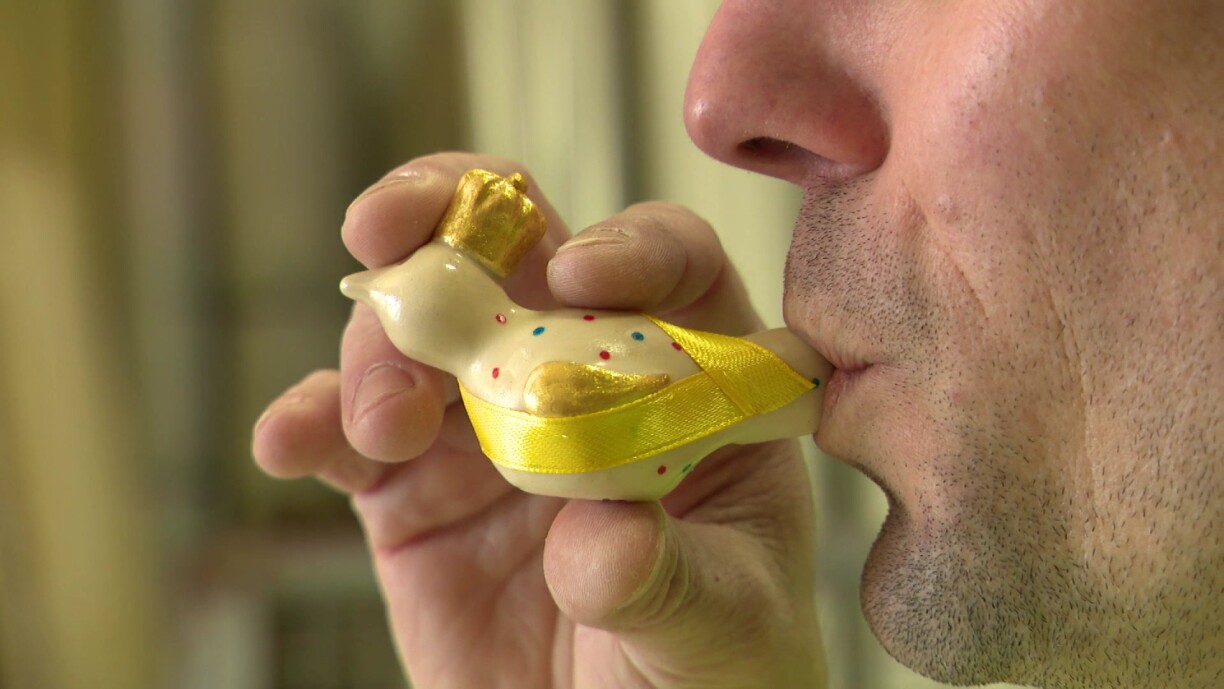
In less than a week, thousands of people will be heading to Luxembourg City or Nospelt for a chance to get their hands on one of the coveted Péckvillercher – small whistling clay birds made for Easter Monday. And every year, the Aulebäcker – potters – come up with something new.
Marc Einsweiler has been making Péckvillercher for ten years now. It all started when the tourist office of the municipality he lives in offered a workshop, which prompted him to sign up with some friends. Since then, he has pursued this passion with joy. He says the whole process is wonderfully stress-free – the perfect thing when you need a moment of peace and quiet.
At first, he only made 25 Péckvillercher for one Emaischen, but little by little, demand grew. A series themed around Superjhemp marked his breakthrough, and since then, people have been asking for Einstweiler’s Péckvillercher every year.
These days, he’s working on a new series called Alldagshelden – Everyday Heroes. Each year has a different theme, and this year it’s the police. The star of the collection is Officer Nicolas. But there’s also a very special Péckvillchen for the occasion of the throne succession on 3 October: this year, Marc is selling the Monseigneur Péckvillchen, which embodies Hereditary Grand Duke Guillaume. Einstweiler says he would love to gift one of them to the Grand Ducal family.
Einstweiler explains that the creation of this particular model was inspired by the different symbols of the Grand Duchy, namely the crown, the colours of the flag, and the yellow sash representing the Order of the Gold Lion of the House of Nassau, after Grand Duke Henri gave his traditional Christmas speech.
Einstweiler spends about two hours making each Péckvillchen, and there will be around 200 of the Monseigneur edition in total. It has been a lot of work these past weeks to get all the policemen and royals finished in time, as Einstweiler details the process, requiring drying the clay, followed by firing at 900°C, glazing, and, finally, the finishing touches.
The Emaischen tradition originated in 1827 in Luxembourg City, when the local authorities moved a small potters’ market to the Fishmarket square for safety reasons, officially establishing what became known as the Emmaus Market. Rooted in the religious and craft heritage of the potters, the fair was traditionally held on Easter Monday and grew into a cherished folk event, especially known for its ceramic whistling birds called Péckvillercher, which symbolise both springtime and the continuity of local artisanal culture.
The Emaischen in Nospelt has been held since 1957, with this Luxembourgish tradition being deeply rooted. Einstweiler shares his version of the story, telling of a potter who, one day, used leftover clay to make Péckvillercher to attract kids and families in the local market in order to sell his wares. Since then, it has become a tradition of the municipality.
Einsweiler is one of the nine potters who sell their creations in Nospelt on Easter Monday. If you’re lucky, you might manage to snag one of these highly sought-after Péckvillercher – but be warned, you’ll need to get there early, as they’re always in high demand.
